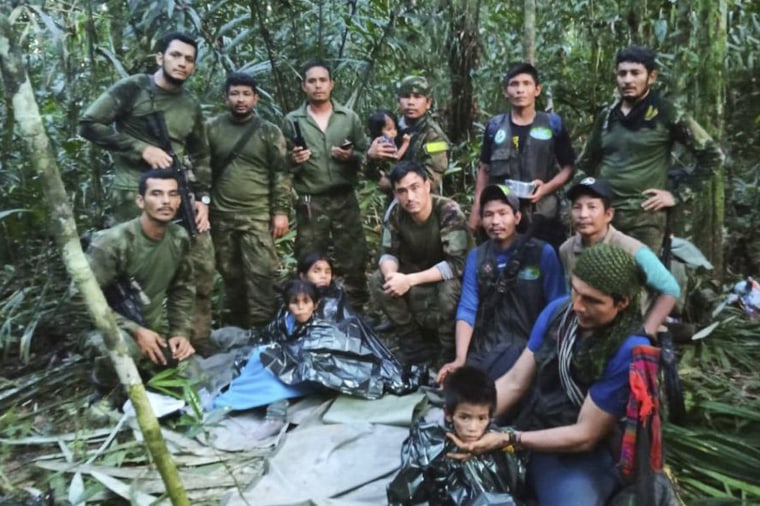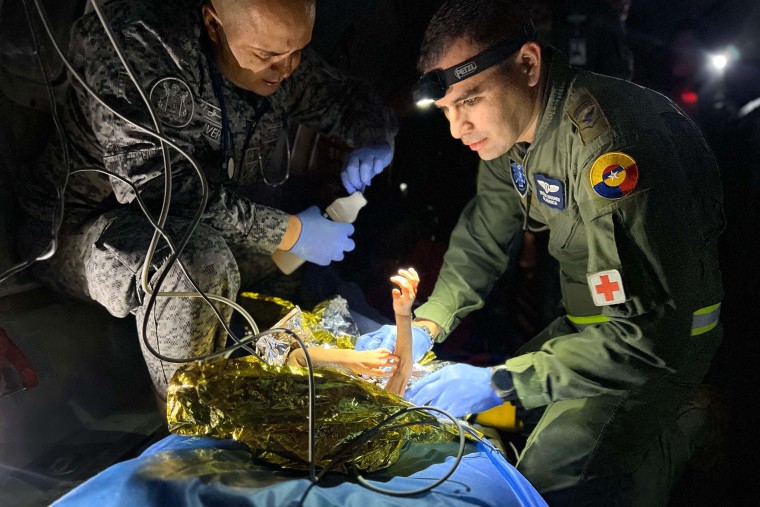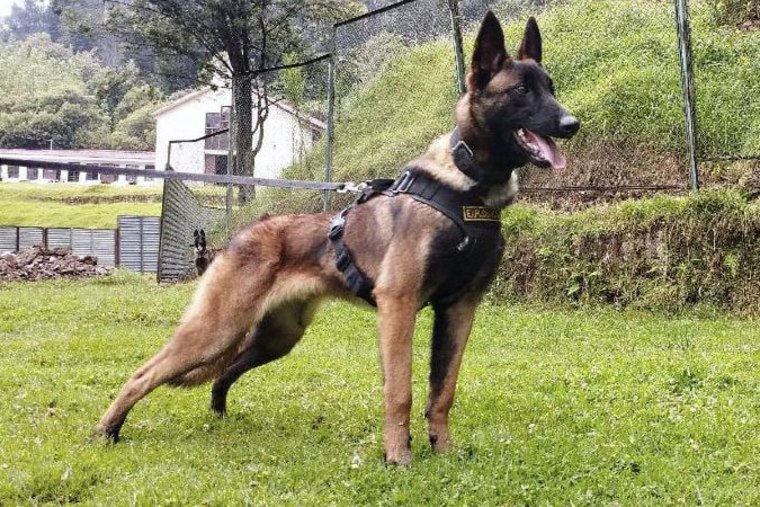Ancestral Knowledge Rising to the Occasion
"First of all, the wish to maintain their lives.The second one, they are Indigenous people, so they have immunity to so many hazards inside the jungle. And third one, they know the jungle.""[The children's background meant they knew] how to survive in the jungle, how to eat, how to drink, stay against the hostile jungle and how to protect from the rain, because 16 hours a day it’s only rain.""The minors were already very weak. And surely their strength was only enough to breathe or reach a small fruit to feed themselves or drink a drop of water in the jungle.""This wasn't a search for a needle in a haystack, it was a tiny flea in a vast carpet, because they kept moving."Gen. Pedro Sanchez, search leader, Colombian military"Finding enough high-quality food, building shelters and keeping away from harm’s way for 40 days and nights in a remote area of the Colombian Amazon would challenge most adult Westerners ... never mind three children younger than 13 carrying an 11-month old baby.""Some 100 years ago, that body of knowledge was very vigorous, but there were no aircraft one could crash in the jungle; 100 years into the future, there may be even more efficient aircraft but very little of that knowledge will be left."Carlos Peres, University of East Anglia, England
 |
"[The children were lost] in a very dark, very dense jungle, where the largest trees in the region are.""The same mother, who became a spirit after the [plane crash] accident, protected them.""And only now is she going to start resting."Indigenous expert Alex Rufino
Colombians were magnetically, emotionally glued to their news services, hoping for over a month to hear that four young children survived the unbelievable ordeal of being in a plane crash in the heart of the Colombian jungle. The Cessna 206 aircraft carrying them with their mother, had crashed on May 1st into the Amazon, killing their mother, the pilot and an Indigenous leader.
The children, aged 13, nine, four and 11 months were on their own. After they were found, the oldest child, Lesley, informed their rescuers that their mother had lived for four days beyond the crash. And that before she died, she instructed her children to leave the crash site, to search for help. These vulnerable children were left to fend for themselves "in an area teeming with snakes, jaguars and mosquitoes", in the words of news media.
But these were Indigenous children, accustomed to hearing about and learning about nature and survival. Lesley had knowledge of which fruits in the wild were to be eaten safely, and which to avoid. She was capable of looking after an infant. Her grandmother is an Indigenous elder, and the family often played "survival" games. This is the background exposure that helped this 13-year-old girl to guide her younger siblings to survival.
 |
On Friday, fully 40 days following the light plane crash that sent them nose-first into dense Amazon jungle, coming face-to-face finally with their rescuers, Lesley's first words, as she encountered the relieved men while carrying her infant brother were "I'm hungry". She was, without doubt, beyond hungry, the children were almost skeletal, weak and likely verging on the physical inability to continue carrying on, on their own.
The searchers came across clues informing them that the children were there, in the vast green confines of the jungle, still alive they hoped, when they discovered fruit seemingly with human tooth marks, footprints, a baby bottle, diapers, and the loyal services of a trained rescue dog who led rescuers eventually to the lost children. There were several hundred volunteers from local Indigenous groups in the search party comprised of 150 military troops.
They had gone through an area of over 30 square kilometres in their frantic search, hoping to give good news to a nation gripped in fear and suspense. When the children were found, one of Magdalena Mucutuy's sons told the rescuers: "My mum is dead", as he rose from where he was found, resting on the ground. The children were taken to a military hospital in Bogota to be treated for malnutrition. Their recovery and removal aided by being winched out of the jungle and helicoptered to hospital.
Army radios crackled "miracle, miracle, miracle, miracle", code that all four were found alive, on Friday evening. The children are members of the Huitoto Indigenous group who are taught to hunt, to fish and to gather the fruits of the earth from an early age. A bag of cassava flour had been on the plane, that the children ate while searching for help, along with seeds and avocado-like fruits from the
Bacaba palm tree, rich in oil.
Bacaba palm tree, rich in oil.
The Colombian military had dropped ten thousand leaflets printed in Spanish and the Huitoto script, with survival tips. Boxes of food were also dropped in hopes the children might come across them. Broadcast messages from helicopters flying over the area, from the children's grandmother, reassured them that rescue teams were searching for them.
There was constant exposure to heavy rainstorms, and there was speculation of armed groups active in the jungle. The children had erected a small shelter from a tarpaulin. "They always stayed near the river, and she (Lesley) carried a small soda bottle which she used to (fill with and) carry water", an Indigenous man among the search team that found the children explained. Indigenous experts feel the children's survival is accounted for as a result of their ancestral knowledge, their "spiritual connection with nature".
It was in fact, a rescue dog that found the children; Wilson, a six-year-old Belgian Shepherd who had tracked the four siblings after running away from his handlers. The dog stayed with the children for several days, then unaccountably moved off and was again lost. It was his tracks that helped to lead the search parties to the children. Now that the children have been found, the search for Wilson's whereabouts continues.
 |
Labels: Colombian Amazon, Lost Indigenous Children, Plane Crash, Rescue Dog, Survival

0 Comments:
Post a Comment
<< Home